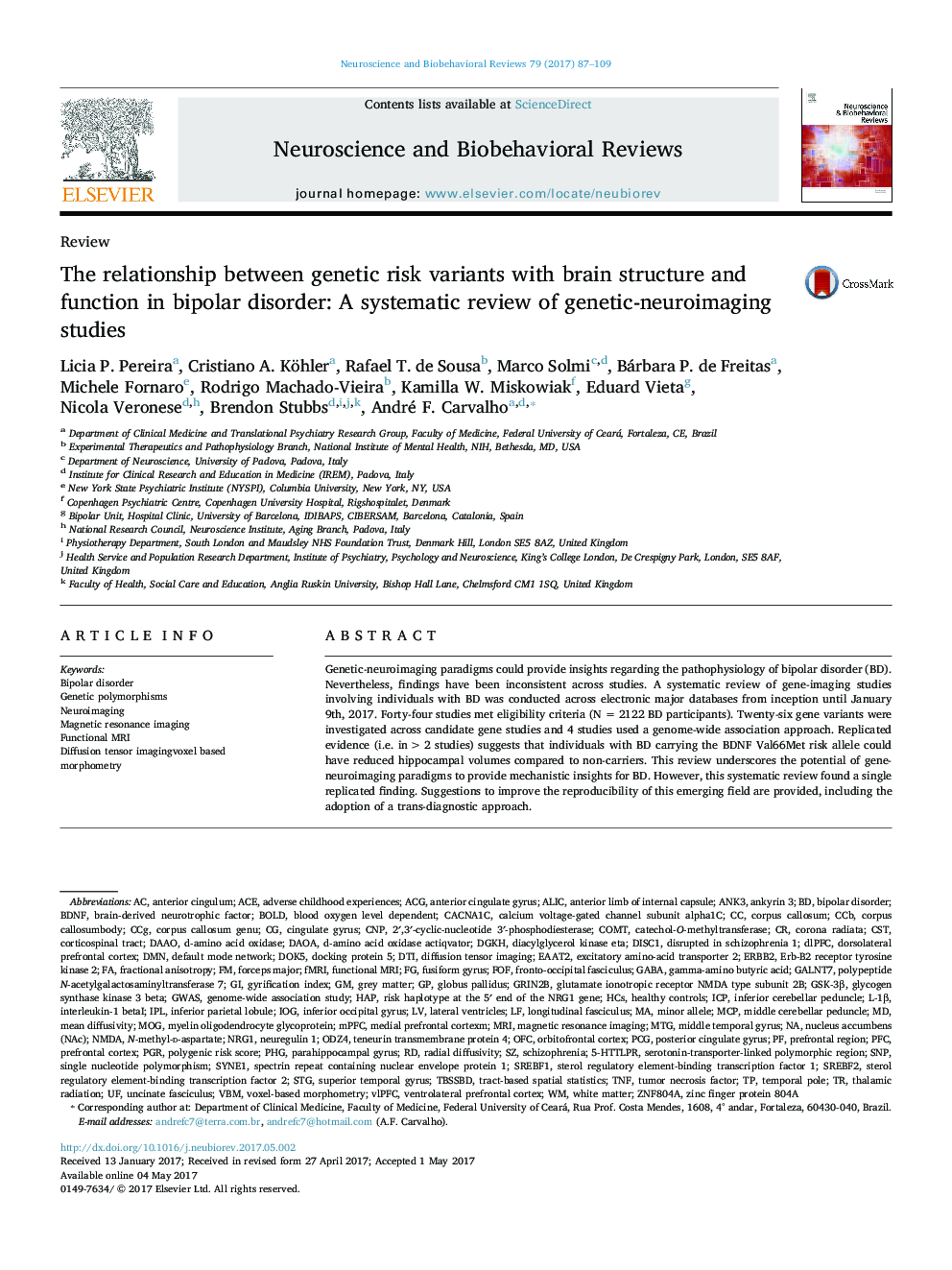| Article ID | Journal | Published Year | Pages | File Type |
|---|---|---|---|---|
| 5043688 | Neuroscience & Biobehavioral Reviews | 2017 | 23 Pages |
â¢Genetic-neuroimaging studies may provide novel insights on the neurobiology of heterogeneous phenotypes like bipolar disorder.â¢A systematic review of gene-imaging studies conducted in samples with bipolar disorder was performed.â¢Forty-four studies (N = 2122 participants with bipolar disorder) met inclusion criteria.â¢Replicated evidence suggests that individuals with BD who carry the BDNF Val66Met allele may have smaller hippocampi volumes.â¢Studies that employed a genome-wide associated approach failed to reveal statistically significant findings.
Genetic-neuroimaging paradigms could provide insights regarding the pathophysiology of bipolar disorder (BD). Nevertheless, findings have been inconsistent across studies. A systematic review of gene-imaging studies involving individuals with BD was conducted across electronic major databases from inception until January 9th, 2017. Forty-four studies met eligibility criteria (NÂ =Â 2122 BD participants). Twenty-six gene variants were investigated across candidate gene studies and 4 studies used a genome-wide association approach. Replicated evidence (i.e. in >2 studies) suggests that individuals with BD carrying the BDNF Val66Met risk allele could have reduced hippocampal volumes compared to non-carriers. This review underscores the potential of gene-neuroimaging paradigms to provide mechanistic insights for BD. However, this systematic review found a single replicated finding. Suggestions to improve the reproducibility of this emerging field are provided, including the adoption of a trans-diagnostic approach.
